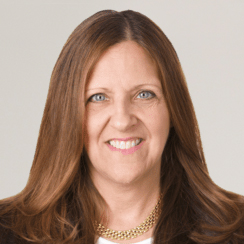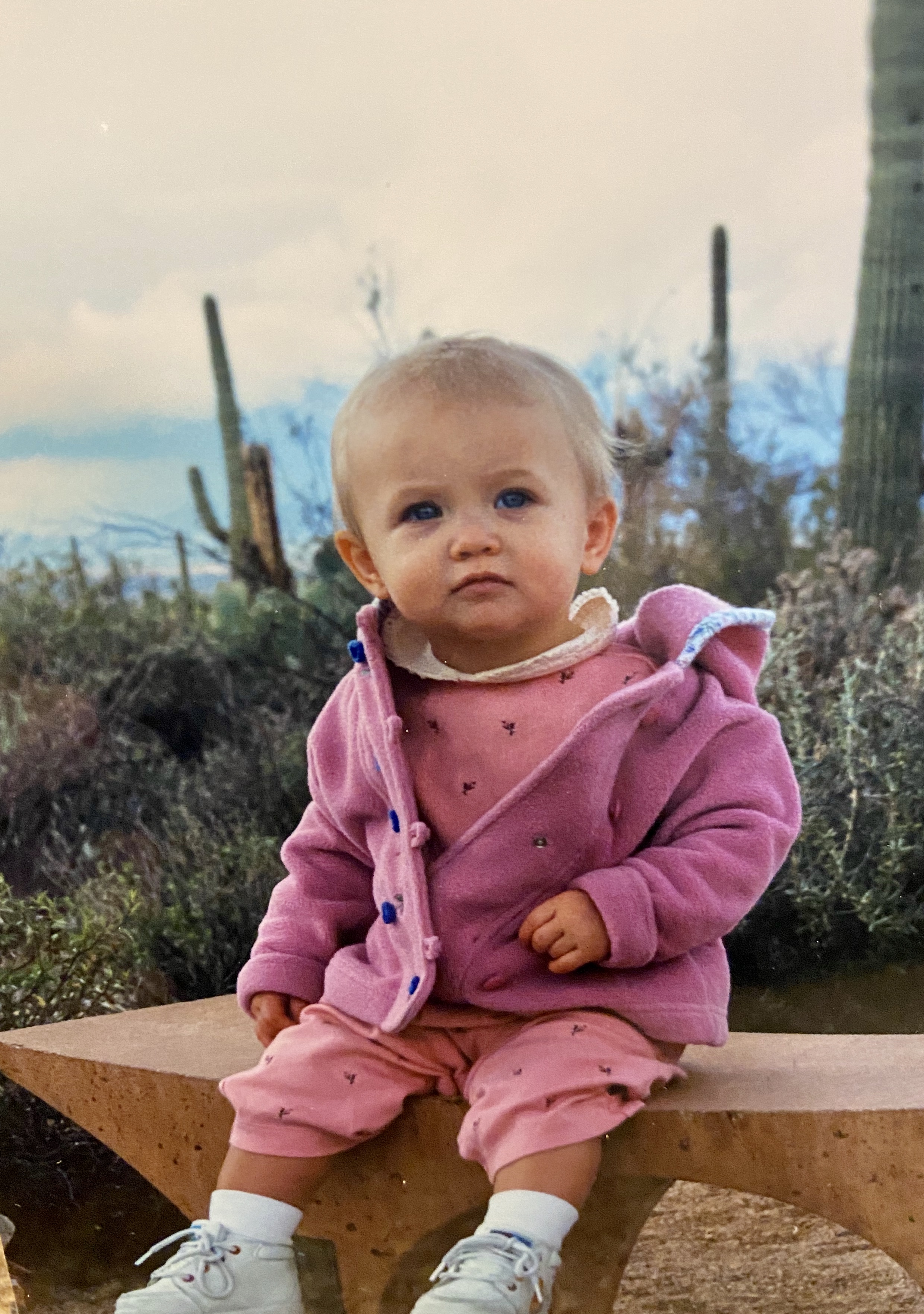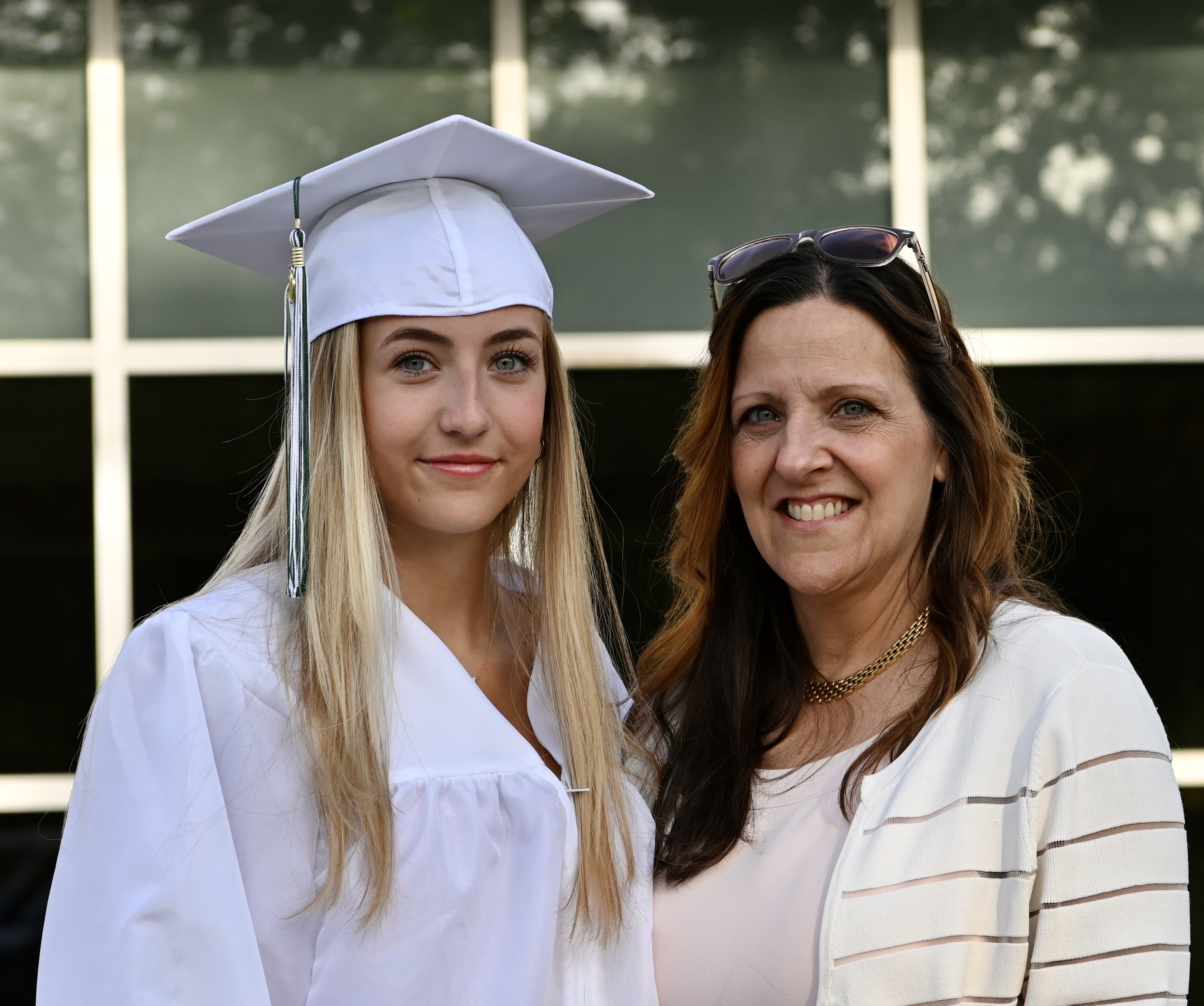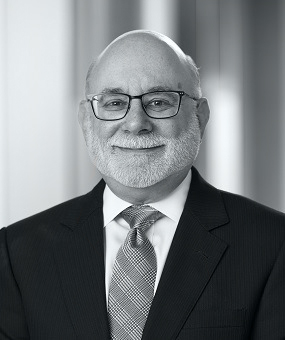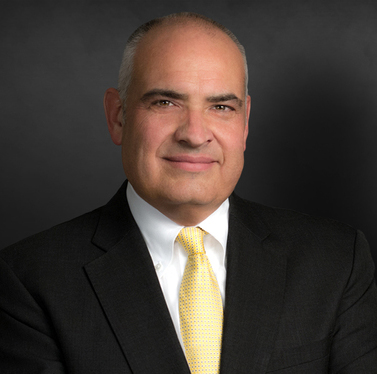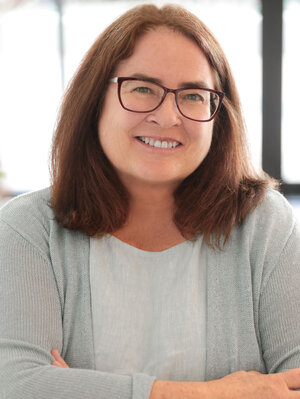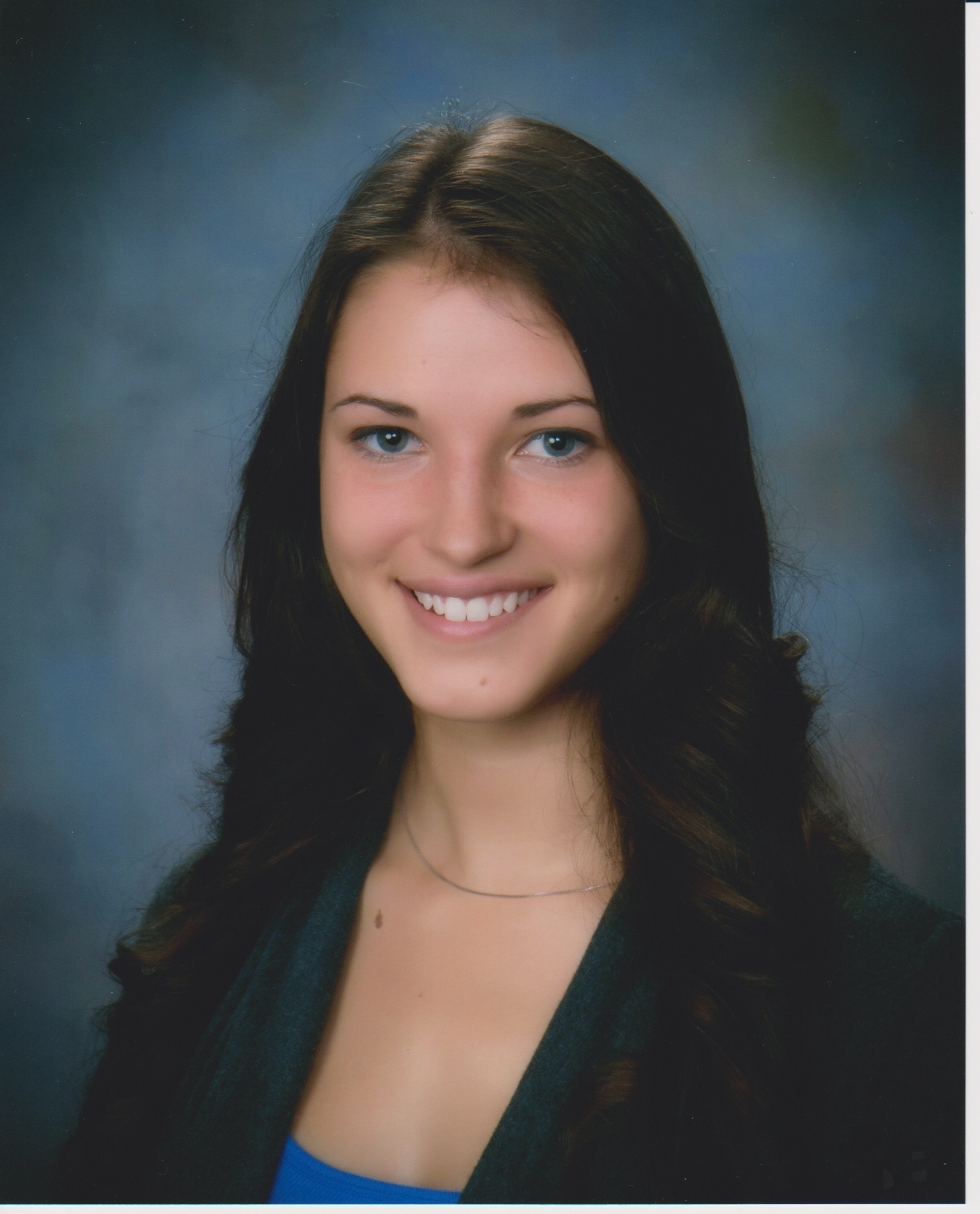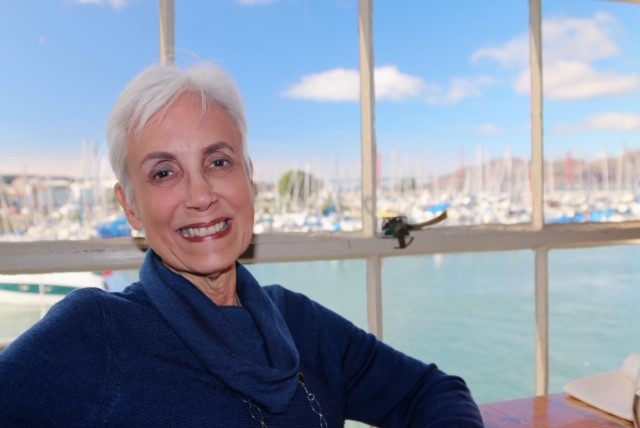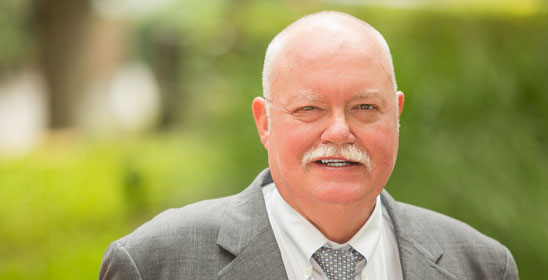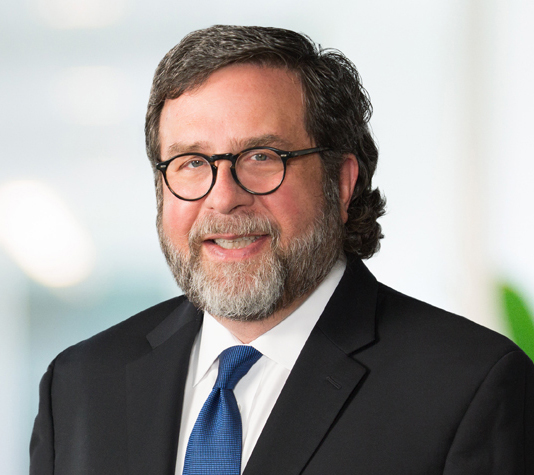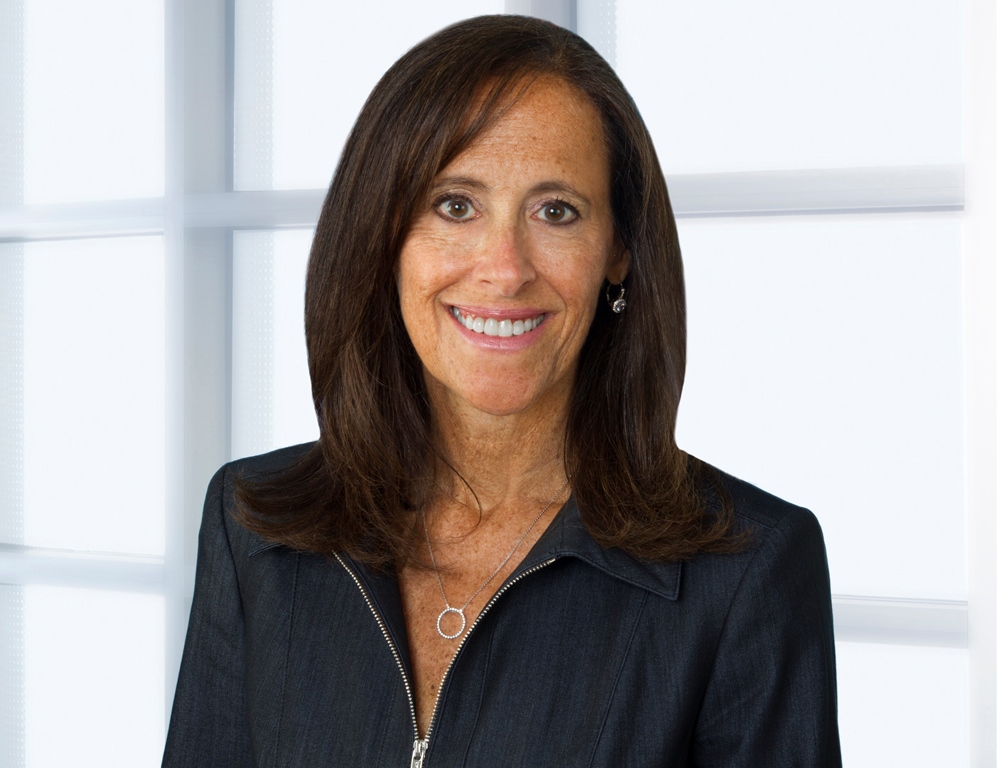June 2020 NewsletterPresident's MessageBy Sheri Pastor, McCarter & English, LLP
I am incredibly optimistic about the College and the coming year, despite the extraordinary challenges posed by the pandemic. Several exciting projects are underway. This year’s Annual Conference will provide live videoconferencing from an expert lineup on the afternoons of September 10, 11, 24 and 25. The event – built by co-chairs Angela R. Elbert and Robert A. Kole and vice-chairs John Bonnie and Spence Taylor around the preferences you expressed in a recent survey – promises to be impressive. It includes stellar programming that addresses Delaware’s sudden dominance in D&O coverage disputes, the responsibilities of primary and excess carriers in defending bet-the-company litigation, and more. The pandemic has offered an opportunity to learn and employ different technologies. To that end, our ADR Committee – now more appropriately known as the ADR/ODR Committee – will lead a discussion regarding Online Dispute Resolution mechanisms that will be prevalent in the short and possibly longer term. Next month, co-chairs Marialuisa Gallozzi and Gerry Albrecht will have a not-to-be-missed program for you. Look for the date and be sure to calendar it. The Insurance Law Symposium will move forward this spring at the University of Connecticut. The change in date hopefully offers a chance to be together both in-person and virtually in what many regard as the country’s insurance capital, Hartford, Connecticut. We are fortunate to be partnering for this event with the Connecticut Bar Association’s Insurance Committee. The Symposium’s co-chairs Rhonda Tobin and John Buchanan are developing programming now for this April event, which will focus on Pandemic Risk. The Symposium is sure to come at a perfect time, as the litigation landscape around pandemic coverage issues is maturing. The College also is currently refining its Annual Law Student writing competition. This year law school teams, rather than individual law students, will compete for the ACCC’s prizes. We hope you will encourage and promote the event to your law school when we announce the details this summer. There is no doubt that the pandemic has had a profound impact. Despite its dark side, however, the ACCC and its Fellows are meeting its challenges. Many of us are busier than ever professionally. We are looking forward to the ACCC’s upcoming events. We are learning and adapting. We better understand available technologies and are using them to stay in close touch with clients, colleagues, peers, family, and friends. Stay positive and well! Sheri Meet the Prez!Past president Mary Craig Calkins sat down with new president Sheri Pastor – remotely, of course , and with the obligatory glass of sparkling wine as is their tradition –and talked about Sheri’s journey to ACCC President and her plans for the 2020-2021 year. MCC: How were you introduced to the field of insurance coverage law? Sheri: Easy. I joined McCarter & English after a clerkship in the New Jersey Appellate Division and began working with Andrew Berry on Owens-Illinois v. United Insurance. I was the most junior person on the team when we briefed and won summary judgment on all coverage issues before the trial court. I have been at McCarter ever since, as my sole firm, and that was 1989. The Owens-Illinois coverage cases finally resolved after 21 years of litigation, and a trip to the New Jersey Supreme Court. By the time I made partner in 1999, I was running the litigation. The Supreme Court’s decision addressed a variety of critical coverage matters, including New Jersey’s unique allocation methodology (pro rata by years and limits), trigger, expected and intended, and whether a policyholder had to share the risk of an uncovered period. Subsequent actions addressed reinsurance issues (reinsurers' obligations to follow the captive’s good faith settlement) and broker malpractice. I began doing insurance coverage exclusively when, a few years into my career, a client “decided” that I should no longer handle underlying product liability trials and should focus on coverage matters exclusively. MCC: What are some of the cases that you enjoyed the most over your years as a coverage lawyer? Sheri: I learned a lot about trials by trying asbestos cases early in my practice, including the New York Powerhouse consolidation. After the Northeast Blackout in 2003, I also was fortunate to start working with Wakefern Food Corp., the largest retail cooperative, whose members own ShopRite® grocery stores. I won their coverage case, establishing that loss of use constitutes physical damage under a property and business interruption policy. [MCC: Sound familiar?] They continue to be a great client. In fact, we recently concluded their Superstorm Sandy claim. The New Jersey Appellate Division recently affirmed a $12 million jury verdict against their insurance broker for failure to properly advise on Wakefern’s Named Storm deductible. Before the jury’s verdict, I got a multi-million dollar award against its insurer, which had not paid losses at their sales price as its policy required, and had improperly taken “make-up” credits against amounts owed for business interruption losses. I have always done policyholder-side work, handling all lines for corporate policyholder clients with due respect to those who handle personal lines. MCC: What led you to stay with your insurance recovery practice all of these years? Sheri: The underlying facts are always interesting and tend to change, which makes it a compelling area in which to practice. We enjoy a fairly small bar and I genuinely like the people with whom I practice, as well as adversaries and the practice area itself. It is always a challenge. And I have stayed with McCarter happily because it has always boasted a great insurance recovery group, and frankly, none of us can afford the conflicts. It is extraordinarily challenging for some of our other practice areas, but is great work and one of the primary focuses of our firm along with its broad offering of other practice specialties. MCC: You are the ACCC’s ninth president. How did you become a Fellow in the ACCC? Sheri: I really came up the ranks through connection in the American Bar Association Section of Litigation’s Insurance Coverage Litigation Committee. Nick Gimble thought I should join ICLC, and I attended my first meeting probably 25 some odd years ago. OMG - I remember horseback riding with Lorie Masters who was wearing chaps because she knew it was real horseback riding, and that was a very long, long time ago. Nick’s horse laid down in the stream but thankfully, mine did not. Nick introduced me to Tim Burns, then rising in leadership, and I have so many friends and colleagues who made their way through the Section of Litigation’s ICLC. One of the first times that I spoke at Tucson was with Erik Christiansen, when we had a plenary session on State Farm vs. Campbell, shortly after that jury brought in the verdict in 2002. I served on various ICLC subcommittees starting in 2002 and was a Regional Representative in Walter Andrews’ leadership year. I brought my kids, Katie and Ryan [now 18 and 21] to Tucson not long after Katie started walking. I have pictures of Katie at the Desert Museum and Ryan sitting on a cactus from that meeting. I was your [MCC’s] vice chair during your term of 2009-2012, and then chaired the Section of Litigation’s ICLC from 2012 to 2015. I also co-chaired the Section of Litigation’s Woman’s Conference with you [MCC: there is a pattern here] in 2014, and the ICLC’s Women in Insurance Network (or WIN) was established in 2012 on my watch. After so many years working with this great group, it was a natural progression to the ACCC and I was elected as a Fellow in 2013.
MCC: You recently addressed the ACCC at the virtual Annual Meeting about your goals during your year as President. What are your plans for 2020-2021? Sheri: It is an extraordinary privilege to take on this role. The pandemic has had a lot of dark sides, but as we move ahead, I am reminded of the Monty Python song, “Always look on the bright side of life.” The circumstances offer a chance to reflect on our values, what we do, and how we do it. My goal is to build on and expand the best that the College has to offer, with goals of furthering our important diversity and inclusion efforts, expanding our complimentary training program to judges and mediators, and adapting to our new reality. We all benefit when the ACCC works to enhance judicial and mediator understanding and effectiveness when handling insurance-related issues in coverage litigation and as implicated in the underlying litigation. Finally, we will work together to expand our Annual Meeting and Symposium offerings to reflect our new reality. MCC: Tell us about your background and your family. Sheri: I went to Seton Hall for undergrad and law school, and met my husband Kevin Orr in law school (well, I had graduated and he was finishing his last year). We were married in 1994, and Kevin has a general practice. We live in New Jersey, where my son Ryan was born in 1999, and daughter Kaitlyn, or Katie, was born in 2002. Ryan graduated in January, just in time for the pandemic to hit and interfere with his job search. Katie will be attending Virginia Tech in the Fall and is very excited.
Sheri: I am practice leader of McCarter’s insurance recovery group, currently serve on the Firm’s compensation committee, and previously served on the Firm’s Executive Committee before terming out, for which I am eternally grateful. As only the second woman to serve on the committees, I recognize the importance of having women serve in those positions. I am also assisting on the Symposium that will take place at UConn in the spring during my year as President; the event is co-chaired by John Buchanan and Rhonda Tobin. The American College of Construction Law and the Connecticut Bar Association are both anxious to co-sponsor the Symposium with us. We hope to maximize attendance and get the College’s name out there to a broader audience. Connecticut is the “insurer capital of the world” and we will be focusing on pandemic issues, which is also adding a lot of interest. And when that does not keep me busy, I have served as a member of the Law360 Insurance Editorial Advisory Board since 2013, I am current Chair of the Essex County Bar Association’s Insurance Law Committee, and I am often appointed by the New Jersey Supreme Court to serve as a special master in ethics cases. For a dozen years to 2014, I had been a member of the New Jersey Supreme Court Professional Responsibility Rules Committee and, before it, a member of a district ethics committee. [MCC: If you want something done, ask a busy person .…]
MCC: Obviously, the coronavirus and all of the related insurance pitfalls are front and center for all of us. How does that affect your plans for your year as President? Sheri: Insurance practitioners are busier than ever before as we shelter in place, try to help our clients, and face the issues. I am finding it difficult to beat some of my clients to the computer every morning, even though I am a morning person. We are all working 24/7 and will be faced with lots of litigation on most practice lines. We have to reexamine how we are delivering events and benefits and are focusing on the themes that the Symposium will address in connection with coronavirus and COVID-19 losses and liabilities. And we all will continue to do our “other” insurance recovery work in our “spare” time. MCC: And to close, what is your best insurance coverage advice? Sheri: Surround yourself with great people. I was honored to have Ron Kammer and Laura Hanson as my co-chairs during my years as chair of the Section of Litigation’s Insurance Coverage Litigation Committee. Mike Aylward, Mary McCutcheon, Wayne Taylor, and a host of others have always been supportive, and there has been a great line of Presidents of the ACCC. There are a lot of “guys” in our practice area, but the one important thing is that people have really gone out of their way to help women advance in the profession. We have a strong network, and it makes no difference what side of the “v.” you are on. I have been lucky to have industry friends like you, Angela Elbert, and Jason Mazer, as well as those friends like Rina Carmel, Mary Borja, John Bonnie, Laura Foggan, John Mumford and Mike Aylward, who remain my friends even though we have had cases against each other or battled it out from very different coverage points of view. And if you are interested in appointments, let me know now! This is a great organization, and we will continue to make it better! Changing Sides, Disqualification, and ABA Model Rule 1.9(a)By Neil Posner, Much Shelist, P.C., and John Bonnie, Wheeler Hudgins Gunn & Dial
Persichettecoverage lawyer “switch sides”? And will doing so result in disqualification? This is a question addressed by two different state Supreme Courts only two weeks apart. In the first of these, the Colorado Supreme Court held that a lawyer who previously represented an insurer should be disqualified from subsequently suing his former client on behalf of an insured. Persichette v. Owners Ins. Co., 462 P.3d 581 (Colo. 2020). In the other, the Supreme Court of the State of Washington held that disqualification was not required. Plain v. USAA Cas. Ins. Co., Case No. 97563-9 (Slip Op. May 21, 2020). In both cases, the issue turned on the meaning of “substantially related” in ABA Model Rule 1.9(a). In the Colorado case, counsel for the insured previously had been the insurer’s “longtime former counsel.” Notwithstanding the trial court’s finding of “numerous and substantial” similarities between the present and prior representations, the trial court concluded that the law firm’s disqualification was not warranted and that the insured was “entitled to counsel of his choice.” In the Washington case, counsel for the insured previously had defended the insurer in bad faith litigation for over 10 years. Then why should the results have been different? In both cases, the two law firms previously (but no longer) represented, the respective insurers. This fact implicated Rule 1.9(a) of each jurisdiction’s Rules of Professional Conduct. Both jurisdictions adopted the ABA Model Rule, which provides: A lawyer who has formerly represented a client in a matter shall not thereafter represent another person in the same or a substantially related matter in which that person’s interests are materially adverse to the interests of the former client unless the former client gives informed consent, confirmed in writing. In both cases, all parties conceded that the present and former matters were not “the same”; the dispute was whether the matters were “substantially related” so as to implicate Rule 1.9(a). In reaching its decision to disqualify, the Colorado Supreme Court relied heavily on two themes; one textual, the other factual. The textual theme was Comment 3 to the Rule, which provides that matters are “substantially related if: (a) “they involve the same transaction or legal dispute” or (b) “there otherwise is a substantial risk that confidential factual information as would normally have been obtained in the prior representation would materially advance the client’s position in the subsequent matter.” Given the insurer’s concession that the present and former representations did not involve “the same transaction or legal dispute,” the Court’s concern was with part (b) of Comment 3. And that is where the factual theme comes in. Specifically, the trial court made no less than 12 findings of fact, among them that:
While the trial court concluded that the present and former representations were not “substantially related,” the Colorado Supreme Court found the lower court to have “collapsed ‘a substantially related matter’ into ‘the same’ matter” and that, by doing so, “read ‘a substantially related matter’ out of the rule.” Finding that the trial court’s own findings of fact indicated that insured’s counsel knew way too much about the insurer’s inner workings (having counseled on policies and procedures and having trained the staff, including the adjuster on the instant claim), the Supreme Court ruled that disqualification was necessary in order to preserve the integrity and fairness of the proceedings. Two weeks later, the Washington Supreme Court reached a different result under remarkably similar facts. There, the insured’s counsel previously represented the insurer in over 165 matters over a period of more than 10 years, including four bad-faith cases. The insurer further alleged that counsel had access to the insurer’s business customs and practices, confidential claims-handling materials, thought processes of adjusters, and business and litigation philosophies and strategies. Counsel admitted that, over the time he represented the insurer, he had regular access to company employees, executives, and in-house attorneys, had provided the insurer with advice on coverage and litigation strategies, had electronic login credentials to certain internal proprietary and confidential documents, and actively participated in court appearances, depositions, and mediations on behalf of the insurer. In deciding that the present and former matters were not “substantially related,” the Washington Court analyzed both Comments 2 and 3 to Rule 1.9(a). Comment 2 emphasizes that the “scope of a ‘matter’ … depends on the facts of a particular situation or transaction” and that “a lawyer who recurrently handled a type of problem for a former client is not precluded from later representing another client in a factually distinct problem of that type even though the subsequent representation involves a position adverse to the prior client.” According to the Washington Supreme Court, “comment 2 anticipates the exact situation presented by this case: a lawyer representing a current client against a former organizational client on a ‘factually distinct problem’ of the same type as the prior representation. And it allows such representation of the current client, despite objection by the former client. Under this comment 2, [the firm’s] representation of the [insured] is clearly permissible.” In contrast, the insurer focused on Comment 3, which states that “matters may be ‘substantially related’ ‘if they involve the same transaction or legal dispute or if there otherwise is a substantial risk that confidential factual information as would normally have been obtained in the prior representation would materially advance the client’s position in the subsequent matter.’” Like in the Colorado case, the insurer did not contend that the firm represented it in the same “transaction or legal dispute” as the matter in dispute. Thus, the key inquiry was “whether there is a ‘substantial risk’ that [the firm] acquired ‘confidential factual information as would normally have been obtained in the prior representation’ that ‘would materially advance’ the [insured’s] position.” Of significant interest is a point raised and acknowledged by both courts: the former client need not show that the lawyer actually obtained confidential information. This is for the logical reason that the former client should not be and is not required to reveal the confidential information learned by the lawyer in order to establish the “substantial risk.” Rather, a conclusion about the possession of such knowledge may be based on the nature of the services the lawyer provided and the information that would “in ordinary practice” be learned in the course of providing such services. The Washington Supreme Court reviewed the case law in other jurisdictions, finding more persuasive the decisions requiring that “substantially related” matters be “factually related” to implicate Rule 1.9(a). The court declined to follow what has been referred to as the “playbook” approach (which the Colorado Supreme Court made passing reference to), finding that it has been rejected by the current Rule 1.9(a). In this regard, the Court specifically cited Comment 2, which provides that “a lawyer who recurrently handled a type of problem for a former client is not precluded from later representing another client in a factually distinct problem of that type even though the subsequent representation involves a position adverse to the prior client,” and also cited Comment 3, which allows representation despite “general knowledge of the [organizational] client’s policies and practices.” Harmonizing These Cases How, then, do we harmonize these cases coherently? We believe the answer lies in two realms. One is the reluctance of courts to disqualify a client’s choice of counsel. Both of these Courts regarded that as a key principle. The other is the fulsome development of facts by the moving party (which bears the burden) revealing that an insured’s retention of the insurer’s own former counsel really would prejudice the insurer and, perhaps even more importantly, would jeopardize the integrity and fairness of the proceedings. The greater the demonstration of such facts, the more likely a court will be emboldened to grant the motion for disqualification (as was the case in Colorado). Put another way, it appears that the critical factors are: (a) over how long a period of time did counsel represent the insurer; (b) how involved was counsel in creating policies and procedures and training claims staff; and (c) how much time has passed since counsel represented the insurer? In other words, facts matter. Best Practices for Virtual MediationsBy Jean M. Lawler, Lawler ADR Services, LLC
Virtual (online) mediations are the “new normal” for this time of COVID-19 and are sure to be more regularly used even once the days of COVID-19 are in our rear-view mirrors. At the very least, video-conference mediations (and hearings/meetings in general) have become something not for the future but for today, certain to become as common place in our court systems as “court-call” telephonic appearances became. By way of example, the following orders were published by the USDC for the Central District of CA in March 2020: … Effective immediately and until further notice, the Court grants to mediators the authority to excuse a party, a party’s representative, or an attorney from in-person attendance at a mediation conducted under General Order No. 11-10. At the discretion of the assigned mediator, mediations held through the Court’s ADR Program may be conducted by video or telephone conference. … Hearings in civil cases will continue to proceed by video or telephonic conference. Hearings in emergency civil matters may proceed in-court when Phase 2 is implemented, at the discretion of the assigned Judge. On June 2, 2020, the Los Angeles Superior Court announced the implementation of its new Here For You | Safe For You program, which introduced the legal community to LACourtConnect, launched for attorneys to make remote appearances in Los Angeles County courtrooms for all Limited Civil, Unlimited Civil and Complex, Family Law, and Traffic courtrooms. “Attorneys and self-represented litigants will have the option to make audio or video appearances in Los Angeles County courtrooms by using the Court’s new LACourtConnect technology that will provide a secure, safe and convenient way to attend hearings remotely. A key element of the Court’s new Here For You | Safe For You restoration of services and access to justice, LACourtConnect will contribute to social distancing requirements and dramatically change the traditional in-person courtroom appearance model. …” On June 4, 2020, the Los Angeles Superior Court issued a further press release with instructions to attorneys for accessing the LACourtConnect Attorney Portal, explaining: “… Part of the Court’s Here For You | Safe For You plan, LACourtConnect provides a safe and convenient alternative to in-person appearances. This Court-developed technology allows parties to appear in court via video or audio, without having to come to court. LACourtConnect provides the following benefits: • Promotes convenience and choice through cost-effective audio and video options; • Reduces the number of court visitors, which assists with social distancing protocols; • Eliminates driving and parking costs; and • Saves commute time to courthouses. …” These courts are of course not alone in doing so. Courts across the country and around the world are embracing video-conference technology for many types of hearings, including jury trials. And so, the tech evolution in the law continues and in the opinion of this author, there is no turning back. Remote court appearances, mediations, trials, hearing, etc., by whatever name you call them, i.e. virtual, remote, online, videoconference, are here to stay. Not as a complete substitute for in-person proceedings, of course, but certainly as a substitute for many, many proceedings that just a few short months ago one would not have thought able to be held remotely. That said, in line with ABA and state Rules of Professional Conduct requiring lawyers to be technologically competent and to maintain confidences, lawyers need to familiarize themselves with best practices for using video-conference platforms, including for mediation. So, What is a Virtual Mediation Like? Once you become familiar with the virtual mediation process, also referred to as ODR (Online Dispute Resolution), you will become comfortable with it and realize both that the virtual process is very much like mediating your cases in person and that the fact that the mediation is being handled online is not an impediment to settlement. Virtual mediations allow for private breakout rooms where attorneys and clients can talk confidentially with each other and the mediator, just as if meeting in person. The mediator and participants can move from room to room seamlessly. Documents and photos can be shared and documents signed. It is extremely personal - in some ways even more personal than traditional in-person mediations because you are sitting face to face with each other. Zoom is a typically used platform by mediators for a number of reasons, primarily because of its breakout rooms and ease of use.1There are several other available platforms, designed for Mediations and also with security, such as Modron, CREK, and Legaler, as well as meeting apps such as Teams and WebEx. What do I Wear? Dress is usually a mix of traditional business attire and business casual. You cannot go wrong dressing as you would if going to a traditional in-person mediation or court. How Do I Prepare Myself and My Client for the Mediation? Prepare to mediate the substance of your case as you would normally. In terms of logistics, mediators will have provided the attorneys with a link to be used by the parties, attorneys, claims representatives and others to sign into the mediation session. The link is private and will include a meeting identifier and a password. Confirm how and to whom the link is to be provided. Prior to the mediation session, most mediators will email each attorney certain documents for signature by anyone who will be appearing at the mediation - a Confidentiality Agreement and their own “Guidelines for Online Mediation”. The Guidelines provide detail about the process, security protocols, and expectations and should be shared with all participants.2Schedule a pre-mediation conference call with your mediator to discuss not just the substance of the case but also the logistics. He or she will be happy to answer your questions and to arrange a “test run” if you would like. That said, best practices include:
What Should Participants Expect Once in the Mediation Session? The attendees sign in on their computers, tablets, or phones shortly before the appointed time and enter a “waiting room”. They do not see or hear anyone else in the waiting room. Everyone generally appears via video, so that they can be seen, but there are times that people will choose to mute their video so that only their name shows, for example. If someone does not have access to a device with video – or just does not want to be seen – they can either call in to one of the phone numbers provided with the invite and only the phone shows. Or they can “mute” their Video and leave their audio unmuted. The mediator will admit each person into the mediation session from the “waiting room” in one of two ways, depending on the case - either all at once and everyone says hello to each other as they would if meeting in an office lobby, before being moved into their respective private breakout rooms (counsel and clients in same breakout room) just as they would move into a conference room if in person; or they might be admitted directly into private breakout rooms. The mediator will generally take the time to make sure everyone can see/hear and is otherwise comfortable, acquaint each group with features such as how to call him or her back into their breakout room (e.g., using the “ask for help” button), how the mediator will “knock” to let them know he or she is returning to their room (e.g., using the broadcast function), and to answer any questions. If a full-day mediation, plan for breaks. And then the negotiations begin, with the mediator moving from room to room and bringing counsel and/or parties or experts together as appropriate - again, just as would be done in person. Joint sessions are as equally available as individual sessions. It is a comfortable experience and one quickly forgets that they are remote from each other. Some points to remember:
Do Not Panic if something does not go as expected. Any glitch can be handled and remember that Plan B is always available. Often signing out and signing in again will fix everything (much like rebooting your computer). Ultimately, if you cannot sign in with the video link, use one of the provided meeting phone numbers to call in to the mediation. The mediator may share a new link or otherwise help solve your problem. Ultimately, the mediator will make sure that everyone is online and able to see and/or hear at the outset of the mediation. How Are Documents Shared? Zoom and the other platforms provide for various ways to “share” screens and documents and each mediator will have his or her preferred approach, which will have been explained in advance. In the interest of keeping shared documents private, many mediators prefer to have the party who needs to share a photo or other document email it to them, either in advance or during the mediation session. After approval from that party re what can be shared with opposing counsel, the mediator will “share” the photo or document using his or her computer, iPad, or iPhone to show the document on the mediation screen. That way, an opposing counsel does not have possession of a private document and it remains simply visually shared under the mediation privilege. This works fine. If there is need to have parties share directly, that can be arranged. Zoom and other programs also have a “white board” but many mediators find it best to use their iPad for that purpose. What About Signing Settlement Agreements? Mediators will generally have counsel come together during the mediation to finalize terms of an agreement and how the settlement agreement is to be signed. Preferably, one counsel has a settlement agreement, term sheet or MOU form on their computer, which they can email to the other attorney (with the mediator on the email to preserve the mediation privilege) for review and edits, and the document can be signed at the conclusion of the mediation via DocuSign, Adobe or other electronic means - or by printing, signing and scanning or taking a picture of a signature - and then email to one another. Original signatures can be mailed to counsel as may be appropriate. If not able to finalize the settlement document during the mediation session, then it is generally confirmed between counsel via email and the settlement agreement finalized and signatures exchanged within a day or two thereafter. What Kind of Glitches Might Happen? Occasionally someone will accidentally disconnect and must sign back in or must play with unmuting their audio or video. Those situations are usually quickly resolved, with “reboot” (i.e. sign out and sign in again) being a good fallback. If there is slow internet, people and sound may sometimes freeze. Remain flexible to deal with any situation that might arise. Just remember that there is always a Plan B in place (see the Mediator’s Guidelines) with cell numbers at the ready to serve as an alternative way of alerting the mediator to a need. What Sort of Security and Privacy Protocols Should Your Mediator Be Using? Your mediator should be using a number of basic security and privacy settings. In a nutshell, the mediator’s settings should absolutely be set to “not record”, sign-in should be by private invitation and password only – and other settings such as these Zoom settings mentioned below should be in place to protect privacy and confidentiality.3 1. Set the “record” option to OFF. No recording allowed by anybody. This is critical. 2. Set the “chat” options to OFF.4 3. Set the meeting to start using the “waiting room”, until the mediator opens the meeting. No one sees or hears anyone else in the “waiting room”. 4. Admit each participant from the waiting room to the meeting individually if any question about who is in the waiting room; mute participants upon entry. Unmute manually. 5. Set “Display participant names on their videos” to ON. For phone numbers, use the setting to not display the full phone number. 6. Use a randomly generated meeting link instead of a personal meeting ID. 7. Require password. 8. Set “screen sharing” to host only - to avoid uninvited material.5 9. Disable any feedback option, end of meeting survey, etc. 10. Allow host to remove participants. 11. Remind everyone to use a secure internet connection – not public Wi-Fi – and to be in a private place. 12. Set the data center region for meetings hosted by the mediator’s account to “United States” (this can be changed to add other specific geographic areas for international participants).6 13. “Lock” the meeting after everyone has arrived. The mediator can unlock it to let someone back in if necessary. (Hence, the need for cell phone numbers for a person who needs to be let back into the mediation session to notify the mediator.) 14. Turn the setting to require encryption for 3rd party endpoints ON. What Other Resources Might Be Helpful?
1As of May 30, 2020, Zoom has completed its 5.0 integration, with significantly updated security, encryption, etc. 2For an example of Guidelines, please see the “Virtual Mediations” page on the author’s website. www.lawleradr.com. 3Zoom’s updated platform is Zoom 5.0. As of May 30, 2020, everyone’s Zoom platform by default utilizes GCM encryption and other security features. For more details, see the zoom.us website and https://blog.zoom.us/wordpress/category/announcements/new-releases/ 4Some mediators will allow the “chat” function as an easy way to communicate, but for greater security, it is suggested that other ways of communicating be used. 5During the mediation, this can be changed if it is decided to have participants share documents directly, rather than emailing to the mediator to then share. 6This can be set to the United States, Canada, the UK, the EU, or other geographic area. Does not default to any non-selected jurisdiction. The Priest Did It! ACCC Announces Writing Competition WinnersBy Michael Aylward, Morrison Mahoney LLP
Since being created in 2016 by then-president Bruce Celebreeze, the ACCC Practical Skills Law School Writing Competition has provided law students around the country with an opportunity to compete for a cash prize by providing the best written and innovative solutions to a hypothetical insurance coverage problem. This year’s problem asked students to consider the insurance coverage implications of an entirely plausible aftermath to Shakespeare’s Romeo and Juliet wherein the religious order to which Friar Laurence belongs is sued for his botched fake suicide/rescue scheme for Juliet and the families of County Paris and Juliet sued Lord and Lady Montague for their negligent supervision of their son Romeo. The issues presented included whether Friar Laurence’s advice to Juliet to take Belladonna to feign death triggered the professional liability policy issued to his religious order. The claims against the Montagues raised the issue of whether these claims presented an “occurrence” under their Palazzo Owners policy not subject to an “intentional or criminal acts” exclusion and whether the various deaths arose out of one or separate “occurrences.” The contestants were invited to advise either the insureds or the insurers. Our winning contestants this year were Jin Lee of the University of Illinois School of Law and Cheryl Saniuk-Heinig of the University of Maine Law School.
Jin Lee elected to advise Lord and Lady Montague. She predicted that the Province of Verona would likely follow California’s lead in finding coverage for negligent supervision claims. She also opined that the “intentional or criminal acts” exclusion was unlikely to apply to Romeo’s stabbing of County Paris since, even though Romeo was still a resident of his parent’s palazzo, the Verona Mutual policy contained a “separation of insureds” clause that precluded applying his intentional acts to his parents’ rights to seek coverage. Jin observed: [In this case] the negligent supervision was allegedly a contributing cause in the deaths. Since these injuries would not have occurred without the alleged negligence, the negligence was an occurrence within the meaning of the Policy that caused the injuries. Further, the “separation of insureds” provision in the Policy supports coverage here as in Mork Clinic v. Fireman’s Fund Ins. Co., 575 N.W.2d 598 (Ct. App. Minn. 1998), delineating the negligence claim as a separate “causative occurrence.” In any event, Jin concluded that the exclusion would not eliminate Verona Mutual’s duty to defend since Romeo might reasonably have believed that he was defending himself against an assault by County Paris: Because the self-defense exception to the “intentional or criminal acts” exclusion is much broader and generous than the context in which all three cases—Cook, Delgado, and Pinette—discussed self-defense, the Verona Mutual definitely has a duty to defend the claim relating to Paris’s death and potentially duty to indemnify depending on the court’s determination. Finally, Jin concluded that the claims against Lord and Lady Capulet involved separate “occurrences” that would likely trigger the aggregate limit in the Verona Mutual policy: If “occurrence” is defined by the immediate injury-producing act, then it is clear under the present facts that there are two separate occurrences. If “occurrence” was the alleged negligent of the Montagues, there would be no doubt that it would constitute only one occurrence under the Policy, because that is the basis upon which the Montagues are being sued as having contributed to both deaths. However, considering instrumentalities, time interval between the two deaths, and even a series of events leading up to each death, no two occurrences can be more distant than the deaths of Paris and Juliet. As Verona Mutual was already defending under a reservation of rights, Jin did not recommend that the Montagues bring a declaratory judgment action at present but did suggest that they consider entering into some sort of consent agreement with the Paris and Capulet families that would protect them from any personal liability.
Cheryl Saniuk-Heinig chose to advise the Montague’s liability insurer, Verona Mutual. She also concluded that the Province of Verona would likely find that these claims involved a covered “occurrence.” Unlike Jin, however, she took the position that the “intentional and criminal acts” exclusion would not apply to the killings at the end of Act V because Romeo had been banished from Verona days earlier and therefore was no longer a resident of his parent’s household and therefore not an “insured.” She also was optimistic that the defense that Verona Mutual was providing to the Montagues would likely succeed at trial: While the events in the Capulet Crypt may be a covered occurrence, it is likely that the Capulet’s claim of negligent supervision of Romeo will fail. A third party’s claim for negligent supervision is premised upon the existence of a legal duty that requires a parent to supervise their children in order to prevent harm or damage to a third party. Assuming that such a duty exists, and that breach of the duty is an actionable claim, any duty Lord and Lady Montague had to supervise Romeo ended upon his death. The intentional harm that Juliet inflicted upon herself causing her death all occurred after Romeo’s death when no duty existed. Thus, the Capulet’sclaim will likely fail. However, because of the Verona Mutual policy provision that states the insurance company will “[p]rovide a defense at our expense even if the suit is false, groundless or fraudulent,” Verona Mutual must still provide the Montagues with a defense. On the issue of one or multiple “occurrences,” Cheryl pointed out the different outcomes that might result depending on whether the Province of Verona followed a “cause” approach or adopted an “event” analysis: Here, based on the cause test, the deaths of County Paris and Juliet would likely be considered two occurrences. Aside from the instrumentalities that were utilized, the manner in which the deadly force was inflicted in addition to the actor who inflicted the bodily injury lead to the conclusion of two separate occurrences. County Paris was stabbed by Romeo. Juliet attempted to poison herself, and upon failing to accomplish the intended result, stabbed herself. Based on the vastly different methods and actors, a court would likely determine the cause test warrants a finding of two separate occurrences even in light of the proximity of County Paris and Juliet in the place and time of their deaths. However, under the liability event test, there is only one occurrence. Romeo’s intentional conduct in stabbing County Paris resulted in his death. Thus, liability began with Romeo’s deadly conduct. On the other hand, Romeo was dead when Juliet, after intentionally ingesting a sleeping potion, awoke from her unconscious state in the Capulet Crypt. It can be argued it was Juliet’s own deliberate actions that caused her death: taking the sleeping potion, attempting to ingest Romeo’s poison, and finally stabbing herself to death. Thus, he had no longer had any liability to anyone because he was no longer alive. Cheryl also provided a separate opinion to Superior Insurance Company of St. Benedict concerning its potential E&O exposure for the liability claims involving Friar Lawrence. She concluded that Friar Lawrence’s advice to Juliet to avoid having to marry County Paris by taking a narcotic “sleeping draught” that would make her appear to be dead did not, in fact, involve the rendering of or failure to render covered “professional services”: The post-marital counseling that Juliet received from Friar Laurence was as unique as the circumstances. Friar Laurence had knowledge of Juliet’s marriage and thus knew she could not be lawfully wed again. Thus he was faced with aiding Juliet or, by doing nothing, potentially neglecting his duties in promoting an unlawful union. However, there were many less-extreme avenues that Friar Laurence could have pursued. His furnishing and directing Juliet to ingest the sleeping draught in order to deceive her family and all who knew her is likely beyond the scope of any professional service in which Friar Laurence possessed training or expertise. Coming from an authority figure, it can be argued that Juliet was particularly susceptible to following Friar Laurence’s directives. Ingesting a sleeping draught that contained a controlled substance in order to orchestrate a fraud is likely not covered under even the broadest reading of “professional services.” Of note, as Juliet was the individual seeking Friar Laurence’s directives in a professional capacity, her parent’s may lack standing from which to bring a malpractice claim against Friar Laurence; such a claim may need to come from Juliet’s estate. As Juliet was the widow of Romeo at the time of her death, her estate may no longer be controlled by the Capulets’ as she had legally become Juliet Montague. She expressed skepticism that the “nightshade” provided by Friar Lawrence would trigger the policy’s “controlled substances” exclusion, especially as the drug was not, in fact, the cause of Juliet’s death. Also, [It] is likely that the events and circumstances that resulted in Juliet’s death are too far removed from Friar Laurence and contain too many intervening causes that would cut the causal chain of liability for Juliet’s wrongful death. Though directed to and furnished with the sleeping draught, Juliet was in fact the individual who voluntarily and knowingly ingested the draught in order to orchestrate a fraud. Additionally, when she awoke, unharmed, from the sleeping draught, she was the only living person in the Capulet Crypt. All of her decisions and actions were no longer caused or influenced by Friar Laurence’s advice or directives. Juliet unilaterally tried to poison herself. When that failed, Juliet unilaterally found a weapon and proceeded to kill herself with said weapon. Friar Laurence was not responsible for furnishing the poison to Juliet or the weapon to Juliet. The amount of intervening persons and events that led to Juliet’s death results in negating Friar Laurence as a proximate cause for the death of Juliet, especially upon consideration of Juliet’s own voluntary and intentional actions. In conclusion, her recommendations were that: The Superior Insurance Company of St. Benedict must first obtain the specific policy under which Friar Laurence was covered and the language within the Benedictine vows he has pledged. No full and knowledgeable analysis can be completed otherwise. Next, the Company must obtain an expert witness who would be able to speak to the Fourteenth Century standards for post-marital counseling. These industry standards will be vital in determining what a “professional service” will constitute for Friar Laurence. Even considering the sparse case law, it is likely that the Superior Insurance Company will not be required to indemnify Friar Laurence for the wrongful death or malpractice suit. However, based on the unknown policy language, the Company may still have a duty to defend Friar Laurence from the Capulet’s claims against him. If so, the Company should move for a summary judgment dismissal of all counts of the complaint based on the Capulet’s lack of standing and insufficient cause in the death of Juliet. The ACCC thanks all of the law students that participated in this year’s competition as well as the law professors who encourage and mentor them. Member Spotlight: Sue Popik By Christine Haskett, Covington & Burling LLP
About a million years ago, ACCC Fellow Christine Haskett was a very junior associate conducting her first arbitration. The arbitrator was none other than ACCC Fellow and accomplished insurance coverage and appellate attorney, Susan Popik. Sue awarded Christine a complete win, for which Christine has always been grateful. Sue and Christine recently sat down to chat about Sue’s impressive career and what she is up to now, post-retirement. CH: How did you first get into insurance law, and where did it lead you? SP: I graduated from UC Hastings in 1975, and I interviewed at a lot of places. At that time, most law firms had just realized they didn’t have enough women, so I had options. I decided to join the San Francisco firm of Pettit & Martin, and that’s where I got into insurance law. By chance, I happened to end up working with Joe Rogers, who was a long-time insurance guru, and I really loved the coverage work. I found that it presented a good combination of “thinking” work and litigation tasks. Overall, I liked the thinking/writing part best, and that’s what I liked to do most throughout my career (more than discovery, depositions, etc.). I worked with Joe and his clients, and he was a wonderful mentor. Even very early on, he would say to his clients, “you need to deal with her.” As a result, I was able to develop strong client relationships, particularly with State Farm, with whom I continued to work throughout my career. Not long into my career, I also started focusing on first-party issues, and after about eight years, I started handling the Garvey v. State Farmcase. Garvey is of course one of the seminal California cases on concurrent causation, and I argued the case to the California Supreme Court. After Garvey, I worked increasingly on those kinds of cases, particularly those involving earth movement in Marin county, and I continued to handle many appeals. In 1981, a group of us left Pettit to start our own firm. Then, in 1993, three of us struck out on our own again to start our own firm. During this time, I also became a co-author of the Rutter Guide Insurance Litigation book. Bill Rutter once said to me, “if you get tired of practicing, give me a call.” So one day, around 2011 or 2012, I called him and said “were you serious?” As a result, I spent the last six years of my career working for Rutter, as the editor of various treatises. It was a nice way to transition out of the practice of law, and I retired in 2017. CH: What did you like most about practicing insurance law? SP: Definitely the intellectual aspects. The central driver in the kinds of cases I worked on was an unresolved legal question. I never liked like fighting over stupid things. I also didn’t want to do trial work, but I enjoyed writing the trial brief. My two partners, Bill Chapman and Mark White, were trial lawyers. I did the writing, the motions, the jury instructions, and the appellate work. I originally went to law school with the plan of teaching law. I had an undergraduate teaching credential, but there were not a lot of secondary teaching jobs at the time. I actually went to law school on a whim; I’d never even heard of the LSAT before I decided to apply. In law school, I gravitated towards the professors who had practiced law first and then gone on to teach. I thought I would do that, too—practice for a while and then teach—but I ended up liking the practice. CH: What motivated you to start your own law firm? SP: Well, I did it twice. The first time, I wasn’t interested in joining the partnership of my current firm. There were no women partners at the firm, and I saw an opportunity to create my own environment, with people I liked. The second time, the motivations were similar. The firm had become bigger, and we were making decisions that made sense from business standpoint, but that weren’t completely consistent with what I wanted to do with my practice. I decided to go into practice with my two best friends and to start something new and fun. CH: What were some of the highlights of your legal career? SP: The Garvey case was definitely one of them. It opened a lot of doors because concurrent causation issues were important in California. I also briefed (but did not argue) the Pruneyard v. Robins case with the ACLU, involving access to a shopping center for free speech purposes. Likewise, I was proud of Isbister v. Boys’ Club of Santa Cruz, involving access for girls. CH: What are you up to these days? [NOTE: This interview was conducted before shelter-in-place.] SP: I’m currently about to move house, so I’m packing and purging my house of 35 years’ worth of accumulated stuff. I’m also a five-year pancreatic cancer survivor, and I volunteer with the Pancreatic Cancer Action Network. I’m planning some travel with my husband, who is a phenomenal amateur photographer, as is my brother. We’ve been on photography trips to Vietnam and Africa, and we’re planning trips to Cuba and New Zealand. I’m also busy annoying my children and grandchildren, two of whom live very nearby, and two of whom live in Santa Rosa. I’m most definitely not working. I started practicing when it wasn’t possible to work from home, and I got into bad habits. I worked a lot for 45 years, and I didn’t do a lot of other things I should have. These days, I’m trying to not overschedule or to overcommit. CH: I understand you’ve also published a series of cookbooks. What got you interested in that, and how was that experience? SP: I love cooking more than I love anything, except maybe my grandchildren. Cooking is my therapy, and I love to cook for huge crowds. I’ve self-published a few cookbooks, which started because several years ago, a friend who didn’t cook was retiring and asked me for some recipes. Because I’m very Type A, I ended up putting together 100 healthy, easy recipes for her. Other friends then wanted them. The cookbooks became a standard wedding shower present: I would make a bespoke cookbook to go with items on the registry. I also had a niece who got married in Tel Aviv, and for her wedding present, I made her a family history, going through family Passovers with lots favorite recipes, including vegetarian and Mediterranean recipes. Some of my recipes are original, but most of them are recipes I’ve found and maybe tweaked a bit. My younger daughter is very good at graphics, so she makes the covers. CH: Now I’m hungry. Thanks so much for speaking with me, and it was fun to reconnect after all this time! The Fire Last Time—Insurance Coverage and the Spanish Flu Pandemic of 1918—1920By Stephen Pate, Cozen O’Connor This article was also posted on the State Bar of Texas Blog
Insurance Carriers are bracing for Coronavirus claims. Social media is full of information on potential coverage. Yet remember that there was a previous Pandemic: Spanish Flu in 1918-1920. What were there the coverage issues then? Spanish Flu caused almost 50 million deaths worldwide, in a world already ravaged by World War One. In the United States an estimated 25 million Americans—perhaps some 30 per cent of the population-- contracted the disease; over 650, 000 died. The Flu’s first wave began in March,1918. This wave was brief, and perhaps the advent of warmer weather contained it. The next wave struck in the Fall of 1918. This was the deadliest wave and lasted in virulent form for some four to six weeks. It was this second wave that would wreak havoc on the world. In the United States, this second wave began in an army camp in Massachusetts. By September, 1918, soldiers nationwide were infected. The disease jumped to the civilian population. Public awareness of the Pandemic was slow. In those months newspapers were full of news about the end of the “Great War.” By mid-October, the growing number of cases could not be ignored. Many cities quarantined. Businesses closed and public gatherings were prohibited; courts shut down. Still, many places remained defiantly open. The Pandemic crested in October. Thereafter, places reopened and remained open despite flare-ups that occurred throughout the winter of 1919. After that, the Pandemic receded; the last deaths occurred in 1920. What were the consequences for insurers? There was no such thing as Health Care insurance in the United States then. Life Insurance was relatively new. Life Insurance Carriers paid out $100 million in death claims because of the Pandemic—$20 billion in today’s money. The Flu prompted a boom in life insurance. In one state, sales of life insurance doubled in the first three months of 1919 as opposed to the first three months of 1918. Insurance litigation centered around these life insurance claims. Many cases involved misrepresentation, as carriers denied claims on the grounds that the deceased hid their influenza when applying for insurance. Carriers tried to deny claims based on a “War Service” exclusion. This exclusion voided coverage for deaths while on active military service. Since this was the end of a war and Spanish Flu was prevalent in the services, this caused controversy. Ultimately Courts frowned on these denials, holding that having influenza was not equivalent to being killed in military action. There was also Worker’s Compensation litigation, with many Courts ruling that catching the Flu while at work was indeed within the course and scope of employment. There was no hullabaloo about Business Interruption claims. For one thing, businesses were closed only a short period of time. For another, few, if any, companies would have had this coverage. Lawyers did see a way to generate business. For example, one newspaper article said plaintiff’s attorneys were discussing theories that owners of public places owed a duty to the public to keep their premises influenza free. A review of case law, however, reveals no appellate decisions on this point. At the end of the day, there were relatively few coverage disputes. Yet that was a different day. Law School Webinar Series: Speakers NeededThis summer, the ACCC is inaugurating a series of remote lectures to law schools around the country addressing the insurance coverage implications of the COVID-19 Virus. Building on the success of our recent pandemic pop up calls, these 90-minute webinars will discuss the contours of the growing insurance litigation, business interruption and event cancellation disputes, potential D&O and E&O claims, sources of CGL disputes, and trial tactics. The programs will be marketed to law school students and alumni but will also be open to outside counsel and clients with an interest in insurance issues. We anticipate needing six or seven speakers for each webinar and would like to vary the panel by region. Also, where possible, we would like to include alumni of that law school. If you would like to be a panelist, please contact [email protected] or [email protected]. Also, if you are an adjunct professor or are actively involved in a law school that we should contact, please let us know.
Member NewsMichael Huddleston Receives Russell H. McMains Legends of Texas Insurance Law Award
The Insurance Section of the State Bar of Texas has presented ACCC Secretary-Treasurer Michael W. Huddleston, of Munsch Hardt Kopf & Harr, P.C with the “Russell H. McMains Legends of Texas Insurance Law Award.” The Insurance Law Section from time to time presents the Russell H. McMains Legends of Texas Insurance Law Award to recognize a senior Texas insurance lawyer who represents the highest levels of accomplishment, competence, professionalism, and ethics in the practice of insurance law, and who inspires others to do likewise. The award is the most significant recognition for Texas insurance law practitioners. The award is named for the late Russell H. (“Rusty”) McMains, who was a Chair of the Section and one of its founders, and who epitomized the type of practitioner the award is designed to honor. Huddleston is a past chair of the Insurance Section, one of the original four officers and a founder of the Section. Click here to read more. Andy Lundberg Named to Lawdragon’s Global 100 Leaders in Legal Finance
Andy Lundberg, a managing director at Burford Capital, was named to Lawdragon’s inaugural Global 100 Leaders in Legal Finance. This guide is dedicated to the role of legal finance in law firms worldwide and brings together pioneers of litigation finance who have helped build the field. Rhonda Tobin Named to Hartford Business Journal’s 2020 “Women in Business” Class
Rhonda Tobin Rhonda Tobin, co-chair of Robinson+Cole’s Litigation Section, was selected by the Hartford Business Journal for inclusion in its 2020 “Women in Business” recognition. Rhonda is among 15 honorees who demonstrate business success, confidence in themselves and their organizations, and a strong track record of professional leadership. Rhonda has represented insurance companies for almost 30 years in litigation of disputes involving insurance and reinsurance coverage, insurance bad faith and extracontractual liability, and professional liability. She is a member of her firm's Managing Committee. She has also been listed as one of the Top 250 Women Litigators in the United States and a Local Litigation Star by Benchmark Litigation. ACCC Fellows Named to Legal 500 Hall of Fame The Legal 500 United States 2020 edition has been released and several ACCC Fellows have been named to the Hall of Fame: For Insurance Advice to Policyholders: Tyrone Childress, Jones Day; Mitchell Dolin, Covington & Burling LLP; Steven Gilford, Proskauer Rose LLP; John Heintz, Blank Rome LLP; Andrew Lundberg, LundbergADR; Lorelie Masters, Hunton Andrews Kurth LLP; Seth Schafler, Proskauer Rose LLP; John Shugrue, Reed Smith LLP; John Vishneski, Reed Smith LLP. John Failla, Proskauer Rose LLP and Linda Kornfeld, Blank Rome LLP were named as Leading Lawyers. Jared Zola, Blank Rome LLP was named to the Next Generation Partners list. Click here for the full list. ACCC Fellows Quoted in Law360 College Fellows Michael Manire, Manire Galla Curley LLP and Seth Lamden, Neal, Gerber & Eisenberg LLP were quoted in “Elon Musk Risks Conflicts In Move To Insure Tesla’s Board.” Click here to read the piece. College Fellows Laura Foggan, Crowell & Moring LLP, Alexandra A. Roje, Lathrop Gage, and Sheri Pastor, McCarter & English, LLP were quoted in “4 Key Coronavirus Insurance Coverage Battlegrounds.” Click here to read the piece. College Fellows Linda Bondi Morrison, Tressler LLP, David Goodwin, Covington & Burling LLP, Scott Seaman, Hinshaw & Culbertson LLP, and Mary McCutcheon, Farella, Braun + Martel, were quoted in “Calif. Justices Set Montrose's Excess Enviro Coverage Path.” Click here to read the piece. College Fellows Walter Andrews, Hunton Andrews Kurth, LLP, and Scott Godes, Barnes & Thornburg LLP were quoted in “Ransomware Victims Get New Path To Coverage In Md. Ruling.” Click here to read the piece. College Fellow Laura Foggan, Crowell & Moring LLP was quoted in “USAA's Win In Assault Case Curbs 'Intentional Acts' Coverage.” Click here to read the piece. College Fellow Michael W. Huddleston, Munsch Hardt Kopf & Harr, P.C.was quoted in “Why Litigation Fears Mean Firms' Phones Are Still Ringing.” Click here to read the piece.
Welcome New Fellows!Stephen GrovesButler Snow LLP
Charleston, SC
Alexander Henlin
Sulloway & Hollis, P.L.L.C.
Concord, NH
Michael Kiernan
Traub Liberman
St. Petersburg, FL
Alexandra Roje
Lathrop Gage
Los Angeles, CA
Carolyn Rosenberg
Reed Smith
Chicago, IL
Michael Schultz
Parr Richey Frandsen Patterson Kruse LLP
Indianapolis, IN
Angelia Wesch
Oles Morrison Rinker & Baker, LLP
Seattle, WA
Kimberly Winter
Lathrop Gage
Kansas City, MO
|

